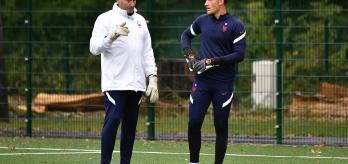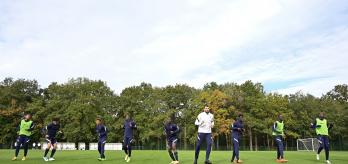The morning session focuses on using the full‑backs to unbalance the opposition and create goalscoring opportunities. The ten outfield players who will start Friday’s game take part in a session consisting of an activation, followed by a possession game before finishing up with an analytical exercise to work on passing patterns.
Session overview
Key coaching points
-
Free up wide areas to allow the full‑backs to push up and create a numerical advantage. The wingers in France’s 4-3-3 formation must tuck inside whenever possible to link up and find the full‑back in space.
-
Retain possession in deep areas on one side of the pitch before switching the play and quickly penetrating through combination play to find the opposite full‑back in space.
-
When space is created in opposition lines, penetrate centrally through combination play to break into the opposition’s penalty area and create opportunities to shoot on goal.
-
Be prepared to transition defensively in the event of a turnover by ensuring that the centre‑backs are positioned close together in order to keep tabs on the opposition centre‑forward.
Exercise 1 – possession game – 4v4 plus 2 neutrals
The exercise begins with a ball‑based activation in which the players alternate between dribbling and dynamic stretching exercises. They then take part in a directional possession game involving a 4v4 plus 2 neutrals, who represent the full‑backs, to introduce the theme of the session.
-
Arrange two teams of 4 plus 2 neutrals.
-
Mark out a playing area measuring approximately 30x25m.
-
Divide the playing area into three vertical zones and create two 5-metre-wide outer channels.
-
Set up two goal areas of around 5m in length.
-
Mark out a halfway line.
-
Position the two teams of 4 in the central zone.
-
Place 1 neutral player, who has a maximum of two touches, in each of the outer zones.
-
The goal zones cannot be defended by the out‑of‑possession team, but the attacker has to score with a first‑time finish.
-
A goal involving combination play in the central zone is worth one point.
-
A goal involving a move that features the full‑back in a deep position (behind the halfway line) and the other full‑back, who plays a cross into the goal zone, is worth three points.
-
Before being able to progress play into the opposition’s half, the in‑possession team have to complete a minimum of three passes in their own half.
-
If a team score with one touch from a first‑time cross, the opposition have to do five press‑ups.
-
Prepare the team’s attack in the build‑up phase by playing passes that make use of the full width of the pitch to draw the opposition out of position before penetrating and raising the tempo of play.
-
Seek out the unmarked full‑back on the opposite side in behind the opposition defence and play the ball into his path to allow him to deliver a first‑time cross, thereby retaining the time advantage gained over the opposition.
-
Play one‑touch passes in the finishing zone to reduce the opposition’s reaction times.
Exercise 2 – passing circuit with finishing
The session continues with an analytical exercise that repeats some specific attacking passing patterns that could be used in Friday’s game against Wales. The ten outfield players who will start the match line up in a 4-3-3 formation against ten mannequins that represent the Welsh players. They are positioned in a 4-2-3-1 system to replicate the formation that Wales adopted in yesterday’s game.
-
Organise 10 players in a 4-3-3 formation.
-
Arrange 10 mannequins in a 4-2-3-1 system.
-
The exercise is performed on half a pitch.
Circuit 1:
-
One of the centre‑backs plays the ball to the other.
-
The centre‑back passes to the full‑back on his side of the pitch.
-
The full‑back passes to the defensive midfielder, who plays the ball back to the first centre‑back.
-
The winger on the ball side tucks inside to free up the wide area.
-
The centre‑back plays a driven pass to the winger, who lays the ball off first‑time to the central midfielder.
-
The central midfielder plays the ball in behind into a wide area for the onrushing full‑back, who delivers a cross into the box.
-
The centre‑forward, the other central midfielder and the winger on the opposite side attack the box to get on the end of the cross.
-
Immediately after the first circuit finishes, the coach introduces a second ball, which is played to one of the midfielders.
-
The midfielders, the centre‑forward and the 2 wingers then combine with each other to work the ball into the box and take a shot on goal.
Circuit 2:
-
One centre‑back passes to the other.
-
The centre‑back plays the ball to the defensive midfielder, who turns and finds the central midfielder.
-
The central midfielder lays the ball off to the first centre‑back, who switches the play to the winger on the opposite side of the pitch.
-
The winger plays a cross into the box that is attacked by the centre‑forward, second central midfielder and the winger from the opposite side.
-
Be patient in possession in deep areas during the build‑up phase to draw the opposition towards one side of the pitch before switching the play to the opposite side to pick out the full‑back who has pushed up in a wide area.
-
Combine in central areas by supporting in front of and behind the ball or playing lay‑offs or one‑twos to destabilise the opposition and drive towards goal.
-
Play the ball into the winger’s path rather than to their feet to retain the time advantage gained over the opposition.
-
Counter‑switch from time to time to catch the opposition off guard by playing the ball back to the side from whence it came.
-
The centre‑backs must remain close to each other when their team have the ball high up the pitch to keep tabs on the opposition centre‑forward in the event of a turnover.











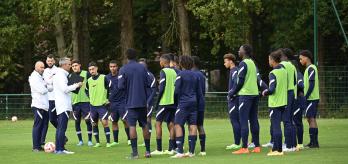
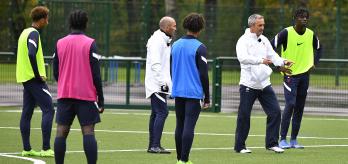
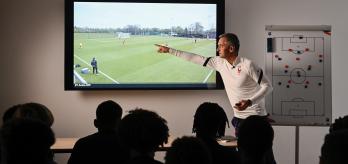
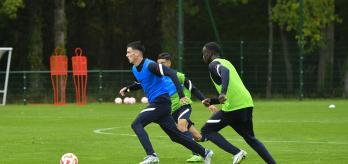
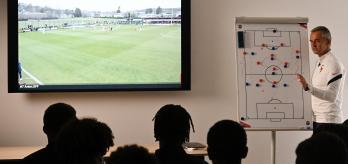
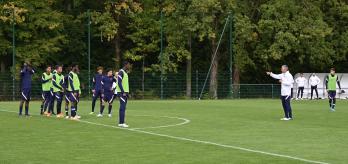
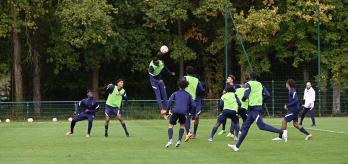
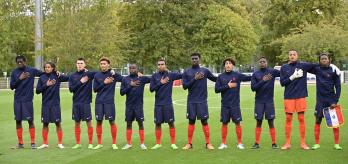
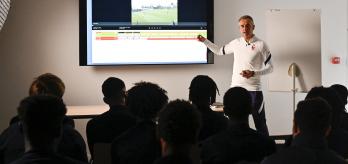
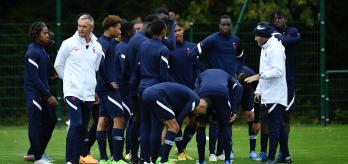
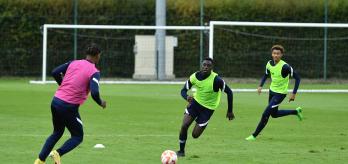

.variant64x64.jpeg)



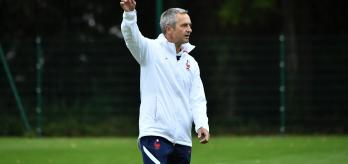
.variant348x164.jpeg)
